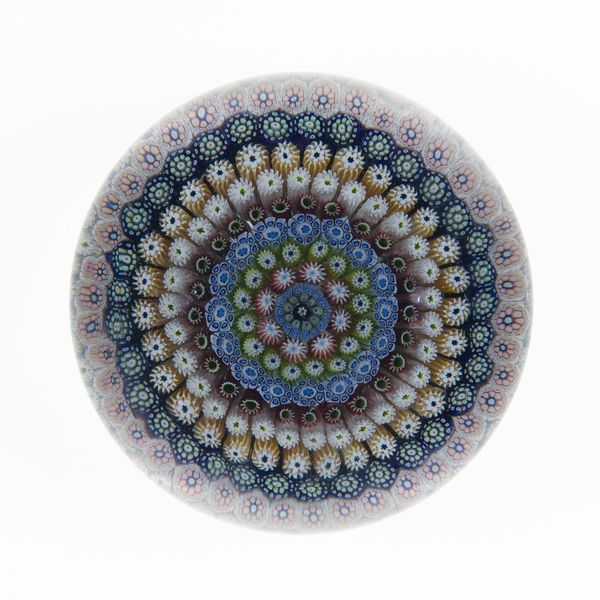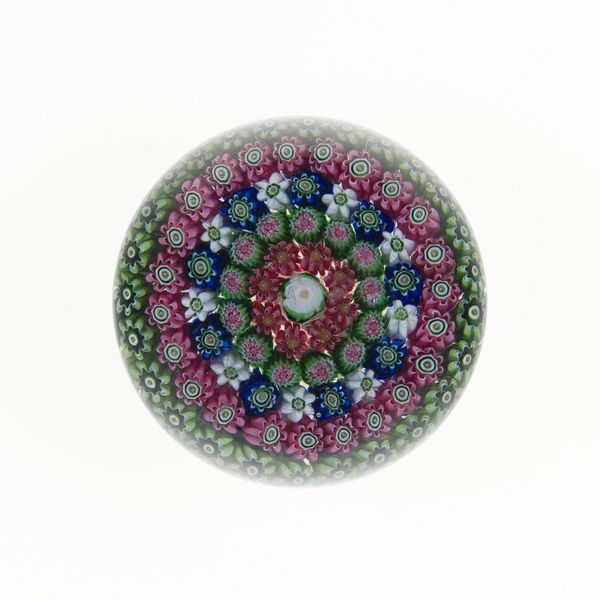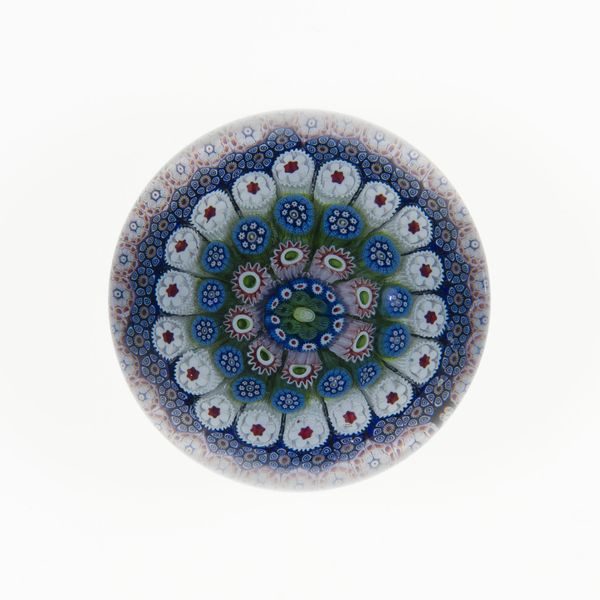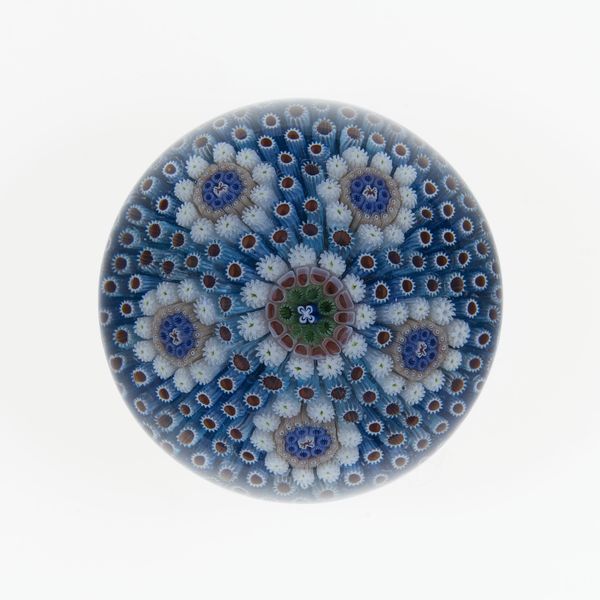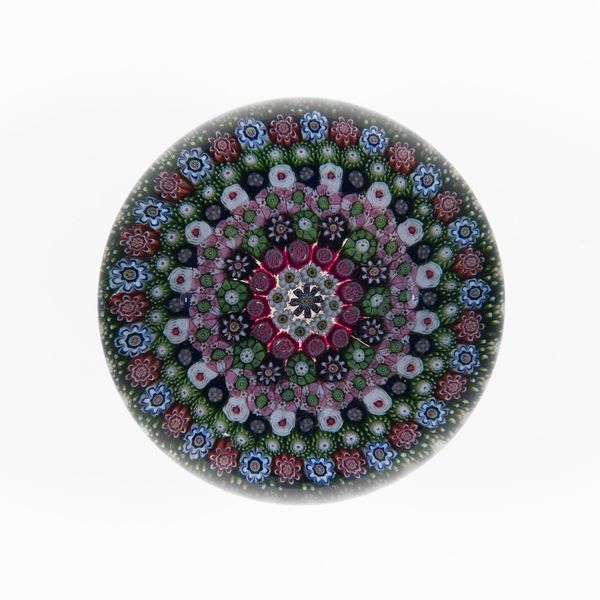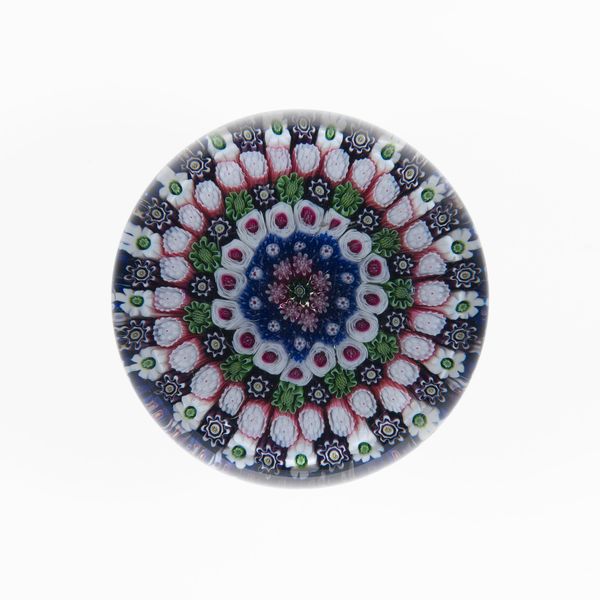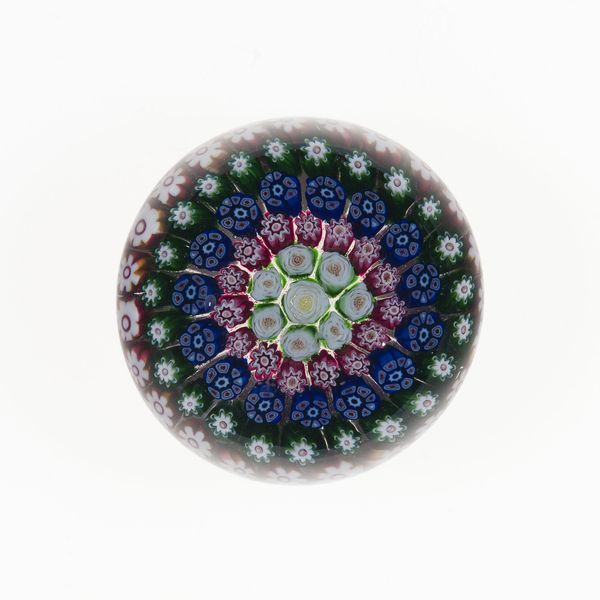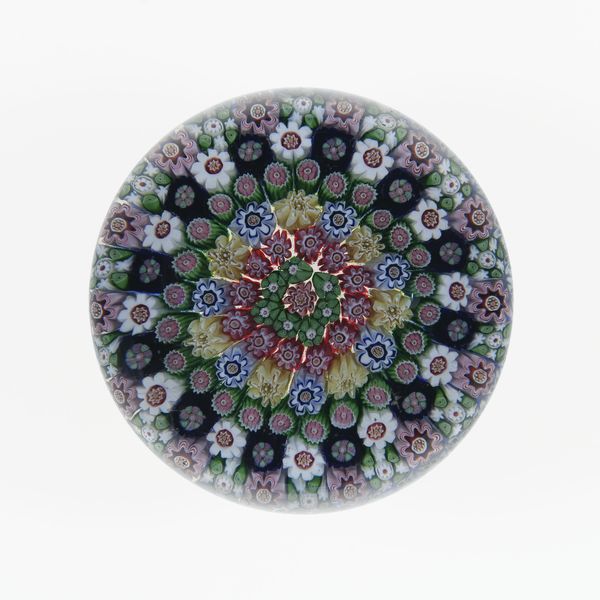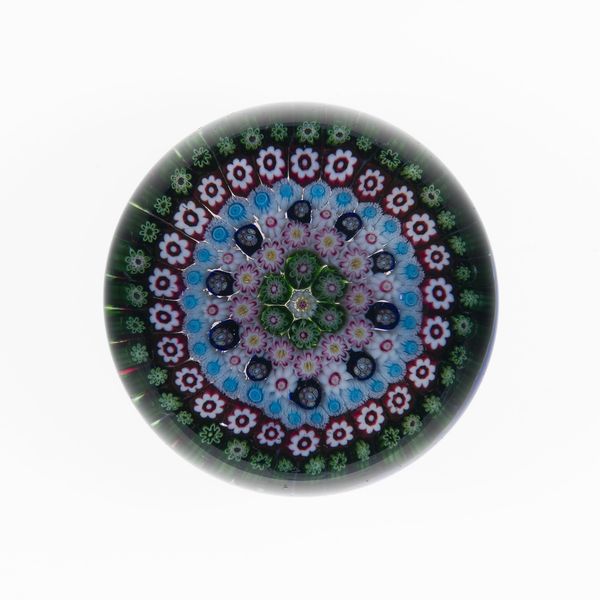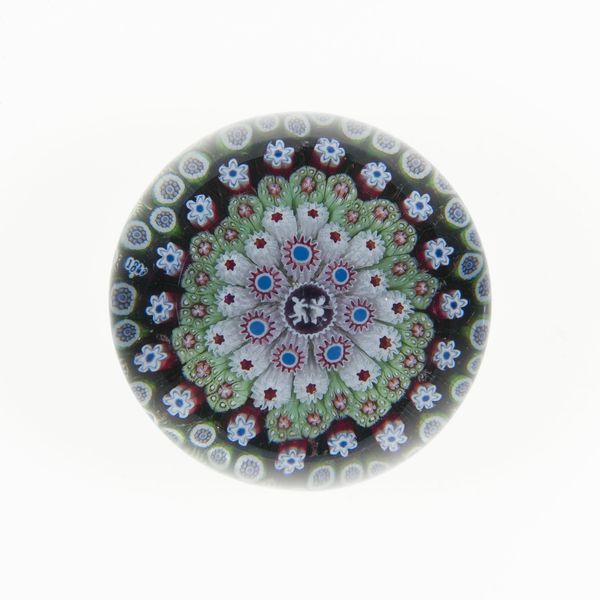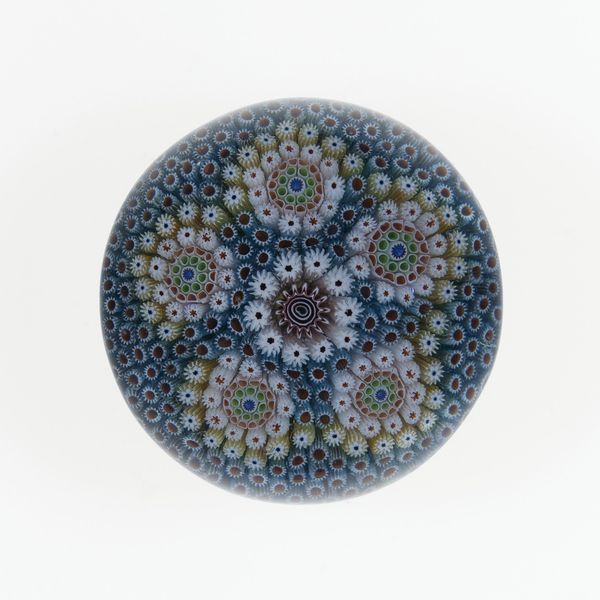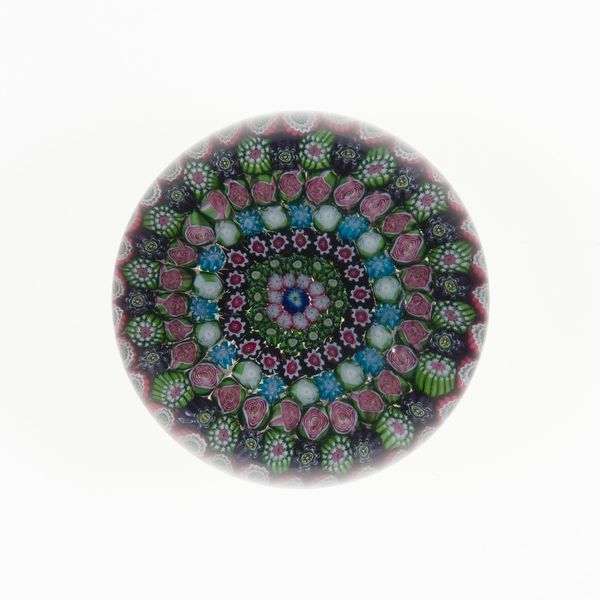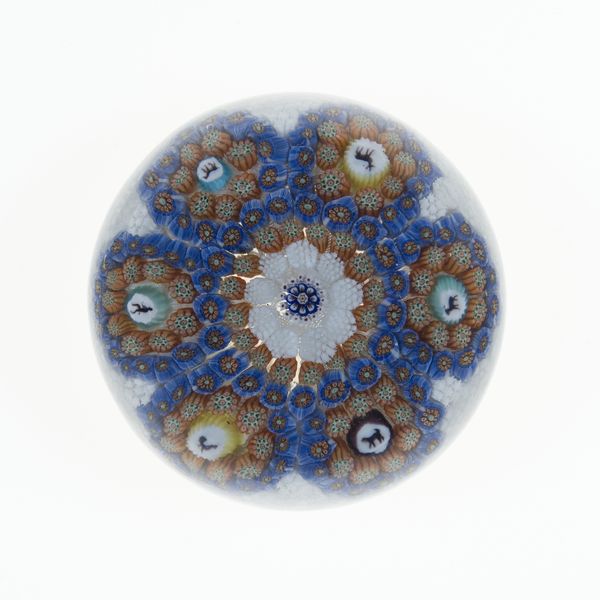
paper, glass
#
pattern
#
paper
#
glass
#
geometric
#
flower pattern
#
pattern repetition
#
decorative-art
Dimensions: Diam. 9.8 cm (3 7/8 in.)
Copyright: Public Domain
Curator: Here we have a "Paperweight," crafted sometime between 1845 and 1860. It was designed by the Compagnie de Saint Louis. Look closely—it’s made of glass and perhaps unsurprisingly, paper too. Editor: Wow, it’s…mesmerizing. Like staring into a miniature universe. The floral patterns are so intricate. It evokes feelings of fragility and hidden beauty. I am taken by the symmetry. Curator: It is fascinating, isn’t it? During the mid-19th century, paperweights became incredibly popular decorative objects, symbolizing status and refinement. The rise of industrial glassmaking techniques meant they could be produced with this previously unseen level of intricacy, and therefore become more widely accessible, shifting consumption patterns of the bourgeoisie. Editor: Absolutely. There's something powerful about this intimate object gaining prominence. The contained ecosystem, reflecting larger societal structures perhaps? Considering the historical context, the proliferation of these ornate paperweights parallels shifts in colonial exploits that romanticized control over foreign elements; they were often integrated as symbolic capital within the burgeoning market. The object becomes, then, both a symptom and instrument of that power structure. Curator: That's a compelling observation! These paperweights, beyond their purely aesthetic function, entered homes, offices, spaces that governed cultural life during times of massive socio-political transformation. And these decorative patterns become a mirror reflecting taste and class status. Editor: Exactly, they allowed their owners to manifest a certain status while visually reiterating acceptable values and patterns, literally flattening out natural formations and compressing them into manageable, pretty commodities. It gives new context to the idea of "power." Curator: Seeing through this historical lens, one begins to wonder about the labour, material supply chains, the conditions surrounding its creation, highlighting aspects of power relations embedded within. Editor: Right. It’s more than just a pretty pattern. It's about thinking through these entangled contexts. Hopefully, we can collectively encourage viewers to delve further. Curator: Indeed, inviting viewers to question and reassess embedded symbolism provides a new avenue to explore even simple objects like these! Editor: Definitely given me a new angle. Thanks!
Comments
No comments
Be the first to comment and join the conversation on the ultimate creative platform.

